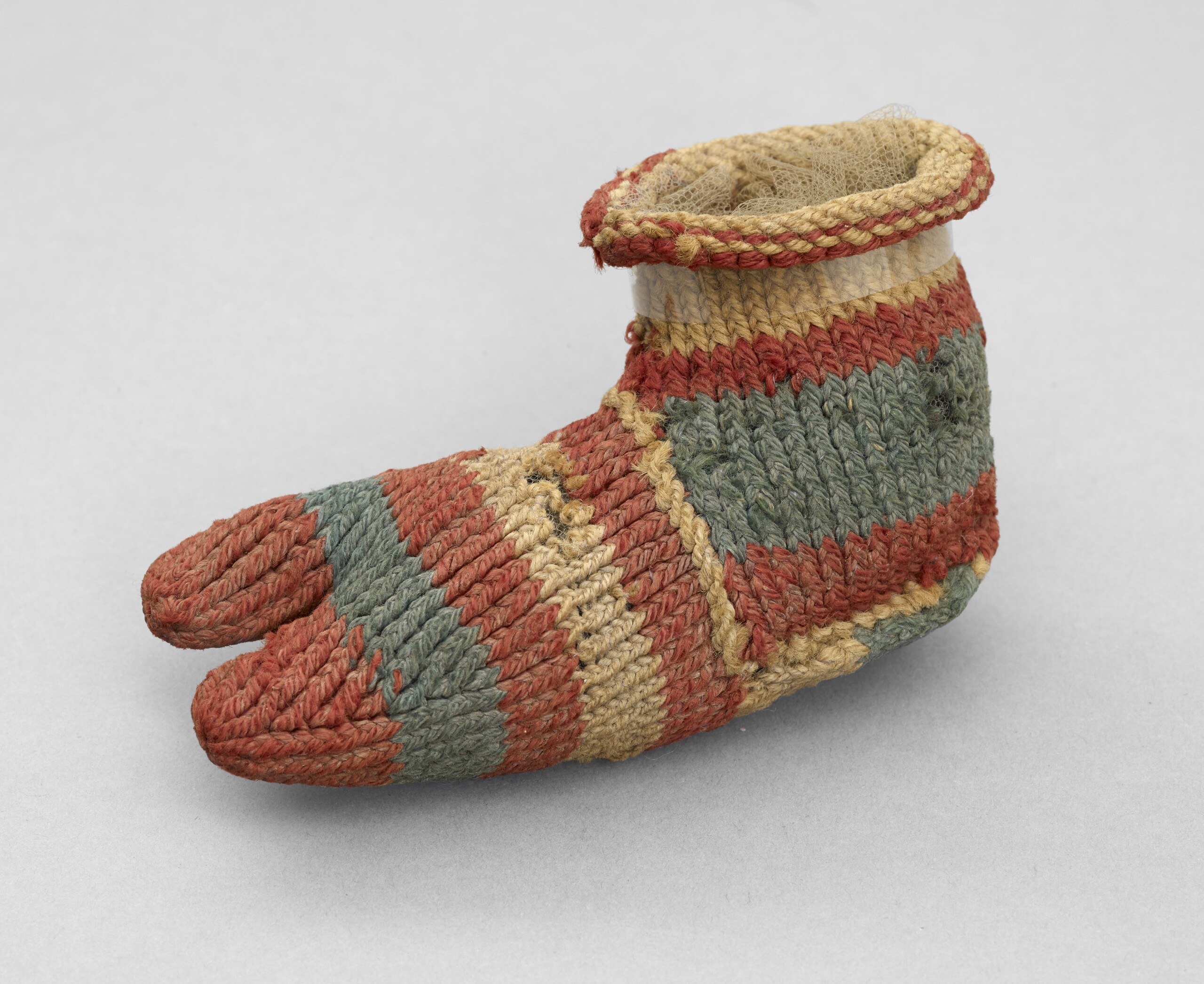
in English original
This object has been translated into 4 different languages by 4 different users
Originally found by a British archaeologist in a Roman-period cemetery in Oxyrhynchus (modern Al-Bahnasa in Egypt), this colourful 1,700-year-old sock with split toes was made in fine 3-ply wool through the knitting method known as ‘sprang’. It was preserved for a long time due to Egypt’s dry climate.
Can you share a photo or drawing of your most colourful socks?
Do you have something you’d like to say, in your own language or English, about the object or translation? We’d like to hear what you think.
Translations are community-sourced and for anyone to participate in, however you use your language. For more information, see Community Guidelines.
30 Nov, 2024
This is so cool! Love discovering new examples of Nalbinding. This is definitely Coptic Stitch Nalbinding for sure. I’m a Nalbinding Specialist and I’ve just recently reconstructed some of these. Love the different colours on this example, you can even see the joins and imperfections made by the original wool crafter. Very awesome! Thanks for sharing! 🙂
14 Sep, 2025
Thank you for this post. I was trying to puzzle out how this could be spang. The fact that it is not makes a lot more sense. Thank you
25 Sep, 2024
Hi, this sock is made using naalbinding (needlebinding). The stitch should be the Tarim stitch, also known as coptic stitch. At least it looks like it. If you need a person in Great Britain to verify the stitch type, please let me know and I will get you a suitable contact.
25 Sep, 2024
This is not made by using the technique of sprang, nor is it knitting. It is nalbound, a needle weaving technique.